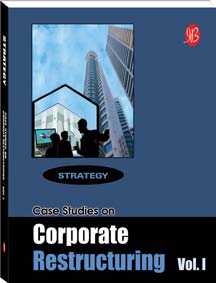Case Catalyst Archives
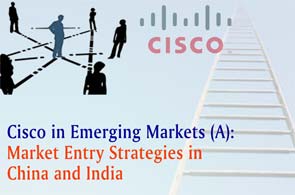
The first case in the series on Cisco Systems' (Cisco's) growth strategies in emerging markets, this case study details Cisco's entry strategies and its subsequent growth in China and India. The company, after initially focusing on the US and Western European markets, tapped the emerging markets like China and India for further growth avenues. The case study examines how Cisco leveraged on huge growth potential in these emerging markets and gives interesting issues to debate on – Cisco's growth through acquisitions and innovations, its market entry strategies in China and India and the challenges of adapting to diverse and local conditions – all amid competitive threat from more cheaper or more advanced technological equipment and a looming threat of declining demand caused by the global economic slowdown. |

In April 2009, IBSCDC conducted video interviews with Ed Cohen, Chief Learning Officer, Satyam Computer Services and Zuber Ahmed, Director Operations, Hyderabad House In a candid conversation, Ed Cohen speaks on the vision of Satyam Learning World and how the team contributes in shaping leaders for tomorrow. He also shares the company's unpleasant past since December 2008, its impact – not only on the company and its employees, but also on India Inc. in general and most importantly his team's monumental efforts in managing the organisational trauma. Listen to Mr. Cohen for understanding the 24/6 efforts put in by him and his team to bring serenity and sensibility to the entire organization. Also listen to the employees who have been through with those trauma times – how they received the news, how they responded and how they solaced each other. |
|||
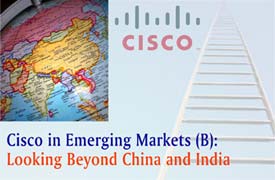 A sequel to 'Cisco in Emerging Markets (A): Market Entry Strategies in China and India', this case study delves into Cisco Systems' (Cisco's) market entry strategies in emerging markets, other than India and China, particularly through acquisitions and its quest for immense growth opportunities in emerging markets, even before developed markets got saturated. However, with Cisco deriving substantial revenues from emerging markets, can the company withstand the global financial crisis pressures and the resultant demand decline, all amid tough competition from local as well as global players? | ||||
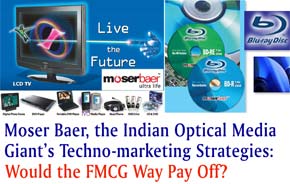
Does it make sense for a technology-driven company to do business just the way a marketing-driven company does its business? The case study highlights how Moser Baer transformed itself into a multi-technology firm by adopting related and unrelated diversifications, helps debate on the sustainability of Moser Baer's growth by adopting the business model and marketing strategies of an FMCG company, and elaborates on the relationship between an organisation's core competency and its diversification (related) strategies. | ||||


Can a business model that operates on user-generated content and new forms of communication – for millions of people to interact and entertain – become a commercial success? In what ways can such companies turn their services into hard cash? In the backdrop of evolution and growth of Web 2.0 technologies, this case study delves into the growing presence of microblogging and successful strategies of the pioneer, Twitter. While elaborating on how Twitter operates, the case study debates on whether Twitter services can go beyond entertaining its users to provide more useful applications and helps identify significant sources of revenue for long-term growth and sustainability. It also highlights growing competition and acquisition threat from established players like Google, Facebook and MySpace. |
In the interview, Zuber Ahmed speaks about the launch of Hyderabad House, its business model – the target segment, pricing and product, the franchisee operating model with kitchenless restaurants and the company's HR policies. He also outlines the company's future growth and expansion plans, in India and abroad as well, whether it would follow the same operating model and menu or adopt different ones. 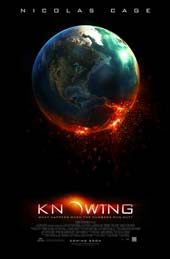 KNOWING
KNOWING
Starred by Nicolas Cage, Knowing is a gripping action-thriller of global proportions about an astrophysics professor, who stumbles on terrifying predictions about the future, from the drawing inside a 1959 time capsule. Watch the heart-pounding race against time as the professor unravels the hidden secret of future global destruction, his desperate efforts and the courage to face the ultimate disaster and the ultimate sacrifice. |
|||

Is this the case of a company making mess out of the existing huge potential? Could it be saved if the same things were done differently? Elaborating on the growth of Subhiksha from a small south-Indian retail brand to a well-known national brand, the case study deals with the growing troubles at the Indian retail chain with a no-frills discount format – like aggressive store expansions from 150 to 1665 in just two years, credit crunch resulting from the global financial crisis and lack of support from major investors. With a major retail success story turning a failure, what are the possible options for Subhiksha to sail through the tough times and regain its lost market? | ||||


Grounded in the collective insights and wisdom of more than 1,000 CEOs, the Enterprise of the Future is a benchmark and blueprint for CEOs, corporate officers and boards of directors around the world. This Global CEO Study report presents findings related to each of the attributes of the Enterprise of the Future. It draws on the rich insights from our CEOs through statistical and financial analyses as well as the voices of the CEOs themselves. Each chapter concludes with some implications and thoughts about how organizations can move forward toward becoming an Enterprise of the Future and a case study to illustrate a leading company. | ||||
|
||||
|
| ||||





